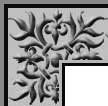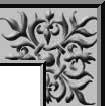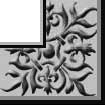

INDEXReading Revolutions: Ideas for Teaching
Learning Activities: The Art of the BookMaking a Book
Visit your school library, or even better, your community library. Ask the librarian to help you prepare a selection of books for students to browse from different eras, different disciplines, and, if possible, different countries. While in the library lead the students in a discussion of the book as a piece of communication, or in some instances as an art form. How does a binding work? What typeface is appropriate for different purposes? Does some paper feel better than others?
When back in the classroom, have the students design a book. They can do the cover art, layout, chapter plan, and design a dust jacket to attract and instruct. Have them go to the school library and bring back diverse examples of book layout and discuss the practical as well as the artistic merits of the designs. The students can access many different sites on the Internet with facsimilies of books. You can, of course, use the books on the Reading Revolutions site. The Magna Carta is particularly popular.
Calligraphy
The copy of Magna Carta they will see on Reading Revolutions has illuminated letters on many pages. This helped the reader identify their place in the book and gave the scribe scope for artistic expression.
Students can practice the calligraphy of scribes as well as trying their hand at illumination. An excellent exercise in creativity is to create a complete alphabet along a theme. There are many example on the Internet of elaborate fonts. These have been created by our modern scribes; people who love words and find the text that creates them beautiful in itself.
Marilyn Shea
Professor of Psychology
University of Maine at Farmington


